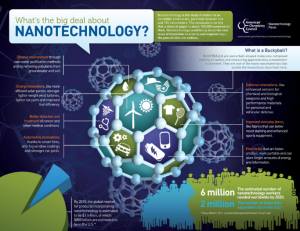 It’s National Nanotechnology Day! A day for raising awareness of nanotechnology and celebrating the science of the small.
It’s National Nanotechnology Day! A day for raising awareness of nanotechnology and celebrating the science of the small.
What is nanotechnology and how small is it? Nanotechnology involves the use of incredibly small pieces of matter. How small? “Nano” means a billionth of a meter. To put that in perspective, an average human hair is about 80,000 nanometers wide. Therefore, a nanometer is tiny, and much smaller than the human eye can see. And yes, while nanotechnology is incredibly small in scale, that doesn’t make it unimportant, even if you haven’t dusted off a chemistry textbook recently!
Nanotechnology is used across all scientific fields, including chemistry, biology, physics, materials science and engineering, and it is at the forefront of some incredible discoveries and technological advances.
Here are a few ways nanotechnology is changing our world in 2017:
Looking for more ways to celebrate nanotechnology?
The National Nanotechnology Initiative plays a critical role in coordinating research, investments and education efforts across the federal government. To celebrate National Nanotechnology Day, the National Nanotechnology Initiative and several schools, labs and organizations nationwide will be holding events to commemorate the date, including a challenge to run a #100BillionNanometers (equal to 100 meters) and a series of podcasts featuring stories from the National Nanotechnology Initiative. A full list of events for the date and updates can be found on the official NNI website and on their twitter page, @NNInanonews.
Alongside these efforts, the American Chemistry Council’s (ACC) Nanotechnology Panel is at the forefront of guiding the responsible development of nanotechnologies domestically and internationally and providing a scientifically sound approach to nanotechnology policy.
To learn more about the Nanotechnology Panel or to inquire about joining the panel, contact Jay West at [email protected].